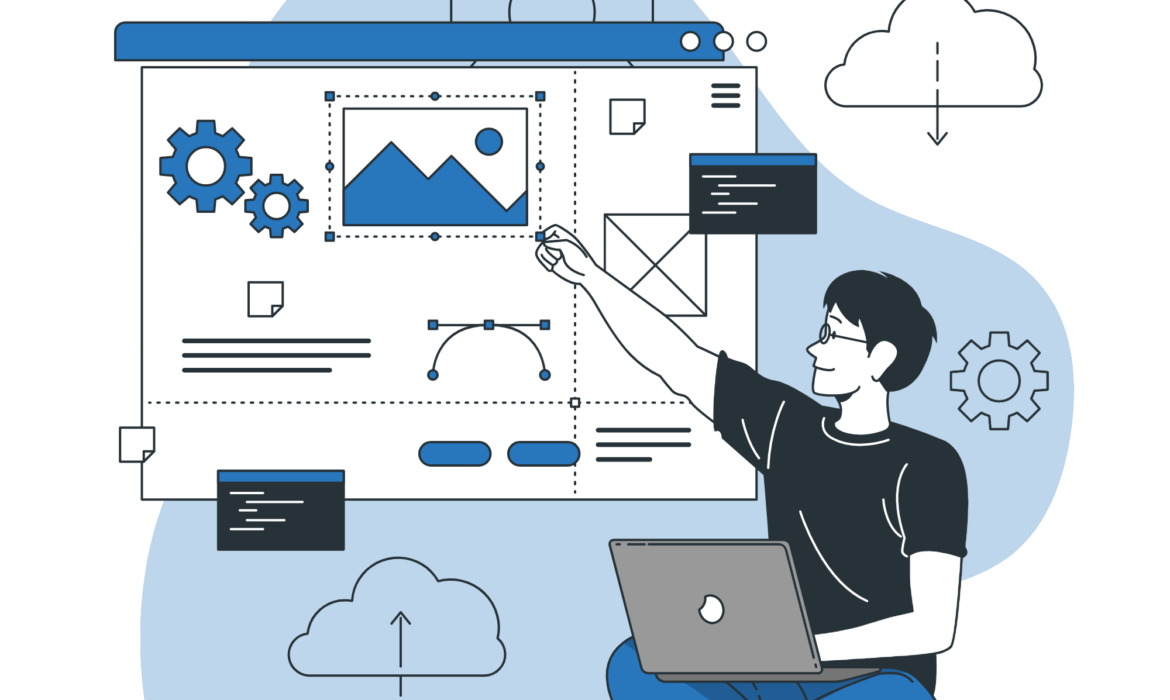Web Development for APIs: Building Connected and Integrated Applications
Introduction
In today’s interconnected world, web APIs (Application Programming Interfaces) have become the backbone of modern software development. APIs serve as intermediaries, enabling applications to communicate and exchange data seamlessly, breaking down silos and fostering a collaborative ecosystem of digital services. By adhering to well-defined standards and protocols, APIs facilitate data sharing, integration, and innovation across a wide range of applications and platforms.
Unveiling the Benefits of Web APIs
Enhanced Application Functionality: APIs allow developers to integrate external data and services into their applications, expanding their capabilities and providing users with a richer experience.
Improved Data Accessibility: APIs make data available to a broader audience, enabling developers to build applications that leverage existing data sources and insights.
Promoted Innovation and Collaboration: APIs foster a collaborative environment, allowing developers to share data, services, and functionalities, leading to innovation and new product development.
Reduced Development Time and Costs: APIs can save developers time and effort by providing pre-built functionalities and data sources, reducing the need for redundant development.
Streamlined Communication and Integration: APIs streamline communication between applications and systems, enabling seamless data exchange and integration across diverse platforms.
Essential Principles for API Design
Clarity and Simplicity: Design APIs that are easy to understand, document, and use, making them accessible to a wider range of developers.
Consistency and Predictability: Maintain consistent naming conventions, data formats, and error handling across API endpoints to ensure predictability and ease of use.
Versioning and Compatibility: Implement versioning strategies to ensure compatibility with evolving API specifications and protect users from breaking changes.
Security and Authentication: Implement robust security measures, such as authentication, authorization, and encryption, to protect sensitive data and prevent unauthorized access.
Error Handling and Graceful Degradation: Design APIs that handle errors gracefully, providing developers with clear error messages and enabling applications to recover from unexpected situations.
Practical Steps for API Implementation
Define API Scope and Objectives: Clearly define the scope of your API, identifying the data and services it will provide and the target audience it will serve.
Choose an API Design Style: Select an appropriate API design style, such as REST or GraphQL, considering factors like data structure, access patterns, and developer preferences.
Design API Endpoints and Data Formats: Define the API endpoints, request methods, and data formats (JSON, XML, etc.) to ensure a consistent and well-structured API.
Implement API Documentation: Create comprehensive API documentation that clearly explains how to use the API, including endpoints, request parameters, response formats, and error codes.
Test and Deploy Your API: Rigorously test your API for functionality, performance, and security before deploying it to a production environment.
API Integration: Connecting the Dots
Choose the Right Integration Approach: Select the appropriate integration approach, such as direct API calls, SDKs, or third-party integration platforms, considering factors like technical expertise and project requirements.
Understand API Documentation: Carefully review the API documentation to understand the endpoints, data formats, authentication requirements, and error handling mechanisms.
Implement API Authentication: Implement the necessary authentication methods, such as OAuth or API keys, to secure access to the API and protect sensitive data.
Handle API Responses and Errors: Process API responses effectively, parsing JSON or XML data and handling errors gracefully to ensure application stability.
Test and Monitor API Integration: Thoroughly test the API integration to ensure data integrity, performance, and compatibility. Continuously monitor the integration for potential issues and performance bottlenecks.
Conclusion
Web APIs have revolutionized the way applications communicate and share data, enabling a connected and integrated digital landscape. By understanding the principles of API design, implementation, and integration, developers can create powerful and user-friendly APIs that power the modern web and drive innovation across industries.
Creating Progressive Web Apps (PWAs): The Future of Mobile Web Development
Introduction
In the ever-evolving landscape of mobile app development, Progressive Web Apps (PWAs) have emerged as a game-changer, offering a compelling alternative to traditional native mobile apps. PWAs combine the best of web and mobile technologies, delivering an app-like experience that is accessible through a web browser. This innovative approach is transforming the way we interact with mobile content, providing users with a faster, more reliable, and engaging experience.
Unveiling the Key Features of Progressive Web Apps
App-Like Installation: PWAs can be installed on mobile devices, creating an app-like icon on the home screen and allowing users to launch the app directly without the need for app stores.
Offline Access: PWAs can cache data and assets, enabling users to access content and functionality even when offline, providing a seamless experience even without an internet connection.
Push Notifications: PWAs can deliver push notifications to users, keeping them engaged and informed about updates, promotions, or important messages.
Background Sync: PWAs can perform tasks and synchronize data in the background, ensuring users stay up-to-date even when the app is not actively in use.
Design Responsivo: PWAs are inherently responsive, adapting their layout and functionality to fit any screen size, ensuring an optimal user experience across various devices.
Unlocking the Benefits of Progressive Web Apps
Enhanced User Experience: PWAs offer faster loading times, smoother interactions, and offline capabilities, significantly improving the user experience compared to traditional mobile websites.
Improved App Discoverability: PWAs can be installed directly from the browser, eliminating the need for app store submissions and increasing app discoverability.
Reduced Development Costs: PWAs can be developed using web technologies, reducing development costs and simplifying the maintenance process.
Cross-Platform Compatibility: PWAs work seamlessly across various browsers and devices, eliminating the need for platform-specific development.
Enhanced Performance: PWAs leverage browser caching and service workers to optimize performance, delivering faster loading times and a more responsive user experience.
Real-World Examples of Progressive Web Apps in Action
Twitter Lite: Twitter’s PWA offers a lightweight and data-efficient alternative to the native app, providing a faster and more accessible experience for users in areas with limited internet connectivity.
Starbucks PWA: Starbucks’ PWA allows customers to order and pay for their coffee without downloading the native app, streamlining the ordering process and enhancing customer convenience.
Forbes PWA: Forbes’ PWA delivers a news-reading experience that rivals its native app, offering offline access, push notifications, and a faster loading time.
Creating Your Own Progressive Web App: A Step-by-Step Guide
Define Your PWA Goals and Target Audience: Clearly outline the objectives of your PWA and identify the user base you aim to serve.
Choose a PWA Framework: Select a suitable PWA framework, such as Workbox or Polymer, to simplify development and leverage pre-built components.
Design a User-Friendly Interface: Craft an intuitive and engaging user interface that aligns with your brand identity and provides a seamless user experience.
Implement Service Workers: Utilize service workers to enable offline functionality, push notifications, and background synchronization.
Optimize for Performance: Optimize your PWA for performance, ensuring fast loading times, minimal data usage, and a responsive design.
Test and Deploy Your PWA: Rigorously test your PWA across different browsers and devices before deploying it to production.
Embracing the Future of Mobile Web Development with PWAs
Progressive Web Apps represent a paradigm shift in mobile web development, offering a superior user experience, enhanced performance, and cross-platform compatibility.







